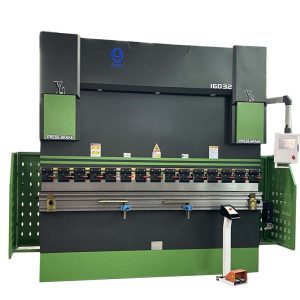Introduction
Shearing machines are versatile tools used in various industries for precision cutting and shaping of materials. Understanding the different types of shearing machines and their unique cutting capacities is essential in selecting the most suitable machine for specific applications. In this article, we will delve deeper into mechanical, hydraulic, and pneumatic shearing machines, focusing on their cutting capacities and the materials they are best suited for.
Mechanical Shearing Machines
Mechanical shearing machines are commonly used for cutting thin sheets of metal. They operate using a flywheel and a series of gears to generate the necessary force for cutting. These machines are compact, simple in design, and have a moderate cutting capacity. With their high cutting speeds, mechanical shearing machines are ideal for industries that require frequent and rapid cutting of thin metal sheets, such as the automotive and HVAC sectors.
Hydraulic Shearing Machines
Hydraulic shearing machines utilize fluid power to deliver enhanced cutting capabilities. These machines can generate significant force, making them suitable for cutting thicker and denser materials. By employing hydraulic cylinders, these machines deliver high-pressure force to smoothly and efficiently shear the material. Hydraulic shearing machines are widely used in heavy industries, such as construction, shipbuilding, and metal fabrication, where large-scale cutting of thick metals is required.
Pneumatic Shearing Machines
Pneumatic shearing machines are powered by compressed air, which drives the cutting action. These machines offer a moderate cutting capacity and are often employed for cutting softer materials like plastic, foam, rubber, and thin metal sheets. Pneumatic shearing machines are lightweight, portable, and well-suited for applications that require mobility or in situations where electricity may not be readily available. They find use in industries such as packaging, signage, and crafts.
Cutting Capacity Considerations
The cutting capacity of each shearing machine type is influenced by several factors. Power output plays a significant role, with hydraulic shearing machines providing the highest force due to their reliance on fluid power. Blade size and material strength also contribute to the cutting capacity. Larger blades typically allow for thicker materials to be cut, while stronger blade materials can withstand higher stresses during the cutting process.
Additionally, it is crucial to consider the shear angle, blade gap, and back gauge adjustments when determining the cutting capacity of a shearing machine. The shear angle affects the force distribution and cutting quality, while the blade gap determines the maximum thickness that can be cut. Back gauge adjustments enable precise control over the length of the cut, ensuring accuracy and repeatability.
Choosing the Right Shearing Machine
When selecting a shearing machine, it is essential to consider the specific requirements of the application. Factors such as material type, thickness, and production volume should be taken into account. Mechanical shearing machines are suitable for thin metal sheets and high-speed cutting, while hydraulic shearing machines excel in cutting thicker and denser materials. Pneumatic shearing machines are ideal for softer materials and applications that require mobility.
Conclusion
Understanding the different types of shearing machines and their cutting capacities is crucial in making informed decisions when selecting the appropriate machine for a specific purpose. Mechanical, hydraulic, and pneumatic shearing machines each have unique strengths and are designed to handle different materials and cutting requirements. By considering the cutting capacity and matching it with specific application needs, industries can ensure efficient and accurate cutting operations.


